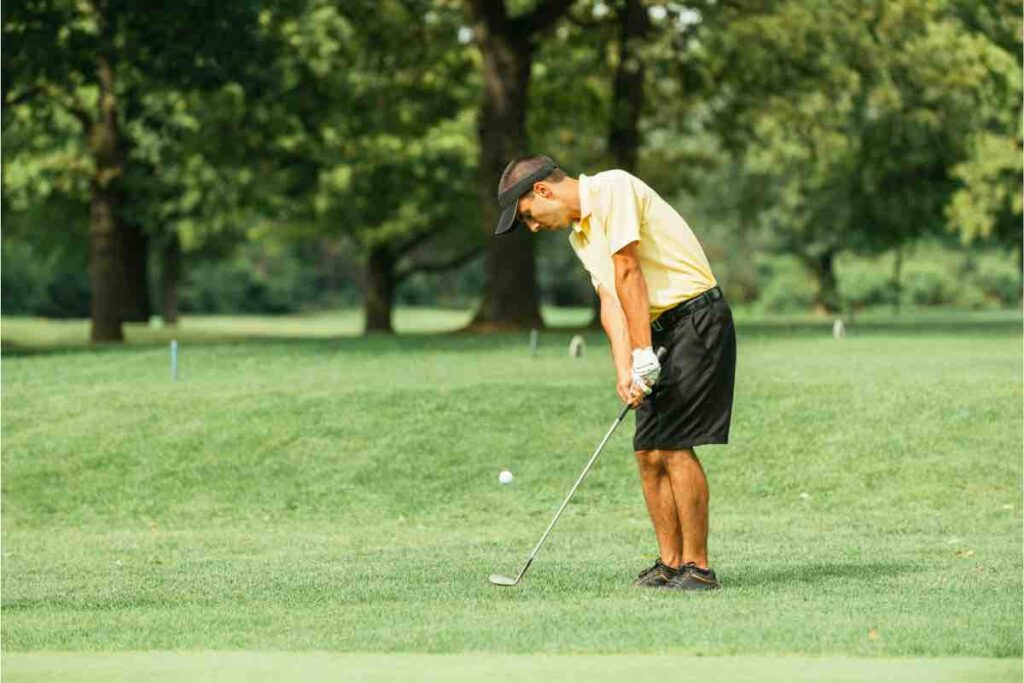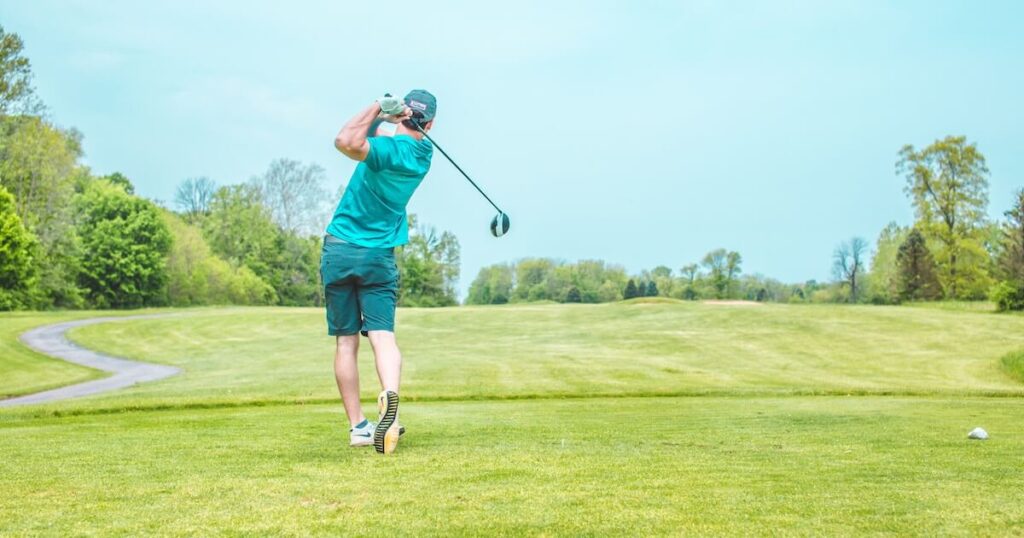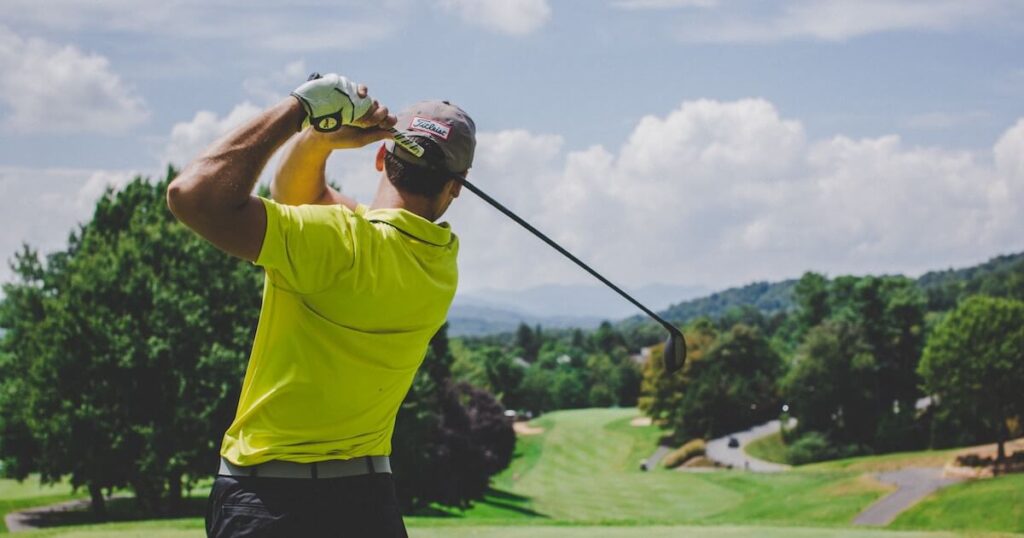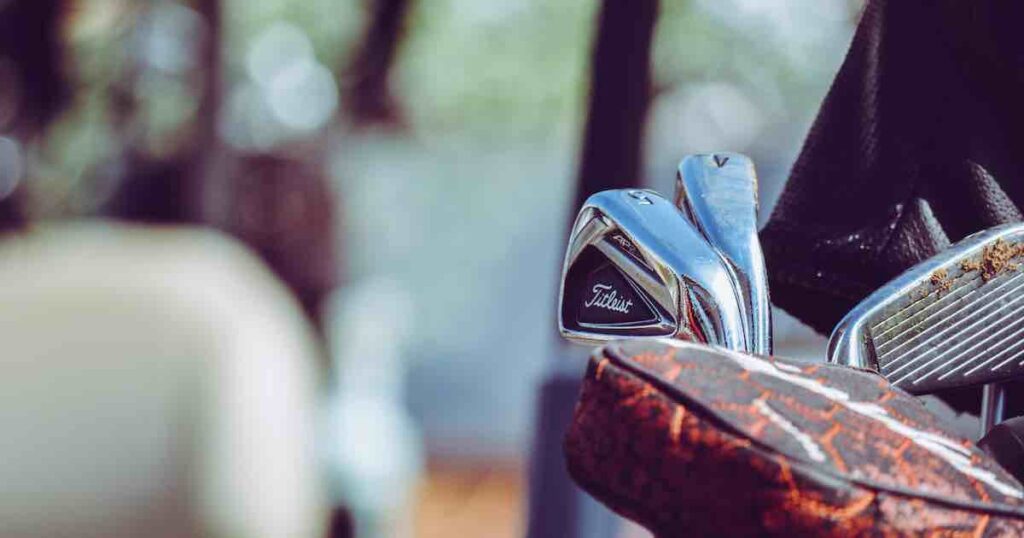In golf, your precision with the ball is the difference between victory and defeat. A skill that can dramatically enhance your control is the ability to generate backspin. Backspin is a term used in golf to describe the ball’s rotation in the opposite direction of its flight caused by the club’s impact. This spin influences the ball’s trajectory and landing, allowing it to stop more quickly upon reaching the green, hence offering players a higher degree of control. Let’s take a look at how to put backspin on a golf ball.
The Basics of Backspin

Backspin can be crucial in many situations on the golf course. It can help you hit a chip shot over a hazard while still being able to stop the ball near the hole. It also allows the ball to roll back towards the hole when it lands past the pin on approach shots.
However, achieving the right amount of backspin is more complex than hitting the ball with your club. It’s influenced by three main factors: club head speed, spin loft, and friction.
- Club head speed refers to how fast the club moves at the point of impact with the ball. A higher club head speed generally results in more backspin, given that the other variables are constant.
- Spin loft is the angle between the direction the club head is moving (the attack angle) and the orientation of the club face (the dynamic loft). A higher spin loft will produce more backspin.
- Lastly, friction between the clubface and the golf ball at impact is crucial for generating backspin. Without sufficient friction, the ball will slide up the face, producing less backspin.
How Backspin Works
Backspin plays a crucial role in determining the trajectory of a golf ball. The spin creates a pressure difference between the top and bottom of the ball, causing it to lift into the air—a phenomenon known as the Magnus effect for us golf nerds. The more backspin a ball carries, the higher its trajectory and the shorter it travels. However, this doesn’t mean that backspin reduces overall distance. In fact, without backspin, a golf ball would travel a much shorter length due to air resistance and lack of lift.
The landing of the ball is also influenced by backspin. A golf ball with significant backspin will stop more quickly upon hitting the ground, or even roll backward. This offers you a players a high degree of control for shots into the green.
The Role of the Club in Backspin
Short irons and wedges, particularly lob wedges, are best suited for putting backspin on your shots. This is due to the loft of these clubs, which provide increased rotation on the ball to to their angle.
An important factor is the striking location on the clubface. The closer you strike the ball to the bottom grooves of the club, the more likely you are to achieve effective backspin. When the ball is struck closer to these grooves, the frictional force of the grooves pulls the ball back as it rolls up the face.
However, it’s about more than just the type of club or where you hit the ball on that club. The condition of the club also matters. Having fresh grooves on your wedge can significantly improve your ability to put backspin on your shots, as they provide better grip on the ball.
Swing Tips: How to Put Backspin on a Golf Ball
Achieving backspin on a golf ball isn’t just about striking the ball with your club. It requires good techniques, positioning, and practice. Here are some key things to remember that can help you achieve the desired backspin:
Ball Positioning
The position of the ball relative to your stance is another crucial factor in achieving backspin. To generate more backspin, position the ball closer to your back foot. This encourages a descending blow on the ball, essential for creating backspin. Remember that the exact position may vary depending on the club you’re using and the specific shot you’re trying to make.
Angle of Attack
The angle of your swing—also known as the angle of attack—is vital for generating backspin. A steeper attack angle helps increase the spin loft, thereby producing more backspin. You should strike the ball with a steeper downward stroke, particularly on approach shots. This technique can help you generate significant amounts of backspin and help the ball roll back to the pin. .
Wrist Extension
How you use your wrist during the swing can also significantly impact the amount of backspin you generate. By extending your wrist into impact and weakening or opening the loft of the clubface, you can get under the ball more effectively. This creates a higher spin contact and is especially effective for flop shots where you need height and to stop the ball quickly on the green. However, remember that this technique requires a delicate balance—too much wrist action can lead to inconsistencies in your shots.
Accelerate Through Impact
Another effective way to increase backspin is to accelerate or speed up through impact. By applying this added force, you can significantly enhance the spin on the ball. This approach requires precise timing and coordination, but when executed correctly, it can profoundly impact the trajectory and spin of your shots.
Use the Club’s Bounce
Take advantage of the bounce of the club during your swing. You can achieve cleaner and more solid contact with the ball by utilizing the club’s bounce. Slightly opening the clubface can increase the loft and spin on the ball, resulting in an enhanced backspin effect.
Mastering these techniques requires practice and patience. However, once you get the hang of them, they can significantly improve your control over the golf ball and enhance your performance on the course. Here is an excellent video from Chris Ryan Golf on how to put backspin on a golf ball using your wedges.
How to Practice Backspin
Creating a descending blow on the golf ball is crucial for backspin. When you strike the golf ball this way, it compresses against the ground, creating the ideal trajectory and velocity. The descending blow also increases the chance of hitting the golf ball cleanly, with no grass or dirt between the clubface grooves and the ball, which will help generate the desired spin.
Hitting the back of the ball is another essential factor. Again, positioning the golf ball further back in your stance will encourage descending contact on the back of the ball, resulting in more backspin.
Now, let’s talk about some drills and exercises to practice these techniques:
- Tee Drill: Position a tee about half an inch in front of the golf ball. This forces you to hit down on the ball and through the tee, resulting in a steeper angle of attack. As you practice this, you’ll begin to see the ball spin back toward you after it lands on the green.
- Divot Drill: This drill helps you practice hitting down on the ball. Place a tee in the ground and try to hit it out while making a divot in front of where the tee was standing. This encourages a descending blow on the ball.
- Towel Drill: Lay a towel down about four inches behind the ball. The goal is to hit the ball without disturbing the towel, which helps avoid hitting the ground before the ball.
- Back of the Ball Drill: Set up as you would for a routine shot, but focus your eyes on the back of the ball. Try to hit the back of the ball with the clubface. This drill helps you focus on striking the back of the ball, which is essential for generating backspin.
Through these drills and understanding the importance of a descending blow and hitting the back of the ball, you can enhance your ability to generate backspin on your golf shots.
Final Thoughts
Backspin is a skill that can significantly enhance your game. Remember, the type of club you use, specifically a lofted wedge with fresh grooves, assists in achieving backspin. Striking the ball with a descending blow and hitting the back of the ball are also crucial techniques to learn. The drills discussed, such as the Divot Drill and Towel Drill, can help you practice these techniques effectively.
Perfecting this skill is something that takes time to happen. Don’t get discouraged if you don’t see immediate results. Remember, even the best golfers didn’t master their techniques in a day. With dedication and patience, you’ll undoubtedly start seeing improvements in your backspin shots.




